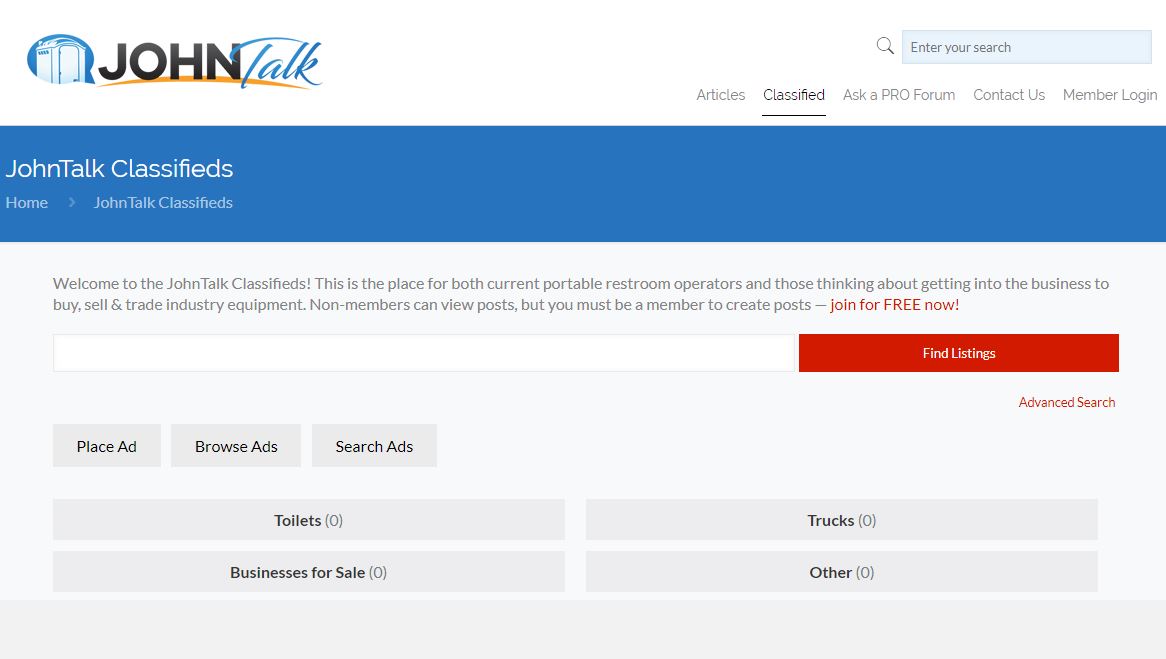
How to Network Effectively
May 4, 2018
Introducing the All-New JohnTalk Classifieds
May 7, 2018When we say that a business has “gone green” or has created a green workplace, we mean it has taken meaningful steps to operate in a more environmentally-protective and sustainable manner.
“Going green” benefits the larger environment we all share. It also helps a business’ bottom line by creating a healthier, more productive workplace for employees, reducing operating costs and appealing to green clients.
Pumping and cleaning portable restrooms requires PROs and their employees to deal with human waste and wastewater containing bacteria, viruses, fungi and other pathogens. Accordingly, PROs going green must consider more factors than many other employers.
Below are some simple, yet important, steps PROs can take to create a green workplace based on the Portable Sanitation Association International’s (PSAI) Code of Excellence (2015):
Protect Employee Health
According to the U.S. Centers for Disease Control and Prevention (CDC), site-specific vaccination recommendations for workers exposed to human waste should be developed by businesses through consultation with local health authorities and professionals. The CDC advises that employee tetanus vaccinations should be kept up to date and consideration given to hepatitis vaccinations.
PROs should train workers handling human waste or wastewater on basic hygiene best practices and encourage them to seek prompt medical attention if they experience vomiting, stomach cramps or diarrhea.
PROs should instruct workers on proper use and disposal of personal protective equipment, including:
- Goggles or splash-proof face shield
- Chemical-resistant gloves
- Waterproof safety-toe boots
Spills and Waste Disposal
PROs must train employees to be vigilant in detecting and addressing waste spills.
Spill monitoring and management training should be integrated into new-hire training and refreshed annually for all workers, preferably during the mid-summer peak season.
Employees must understand that cleanup of any spill they notice immediately becomes their responsibility. The employee who first notices the spill may not abandon the site until it is clean, or a superior has assumed responsibility.
PROs can reduce spills by training employees to inspect pumpers visually before transport and establishing truck “prep areas” that allow for completion of multiple refilling and maintenance functions in a single spot.
Finally, every PRO must respect the environment and obey the law by disposing of waste in a way that meets or exceeds all applicable regulatory requirements.
Get the JohnTalk “ALL-ACCESS PASS” & become a member for FREE!
Benefits Include: Subscription to JohnTalk Digital & Print Newsletters • JohnTalk Vault In-Depth Content • Full Access to the JohnTalk Classifieds & Ask a PRO Forum
Utilize Green Products
PROs should supply and utilize green products whenever feasible in their operations. Here are some examples of such products:
- “Blue” deodorizer for holding tanks that is non-toxic and formaldehyde-free.
- Restroom paper products that are chlorine-free and 100% recycled.
- Cleaning agents and solutions that are non-toxic and non-flammable.
Conserve Natural Resources
The PSAI encourages PROs to take all reasonable steps to conserve resources in their operations. Practical conservation steps include:
- Capturing rainwater and using it to refill fresh water tanks.
- Switching from paper to digital recordkeeping for truck routes and other operations.
- Printing or copying documents on recycled paper using the machine’s “double-sided” function.
- Replacing incandescent light bulbs with natural light, LEDs or T8s.
- Enabling “sleep mode” on computers and other electronic equipment.
Looking to Take Your Portable Restroom Business to the NEXT LEVEL? Download our FREE Guide: “Your Guide to Operating A Portable Restroom Business.”
Thinking About GETTING INTO the Portable Restroom Industry? Download our FREE Guide: “Your Guide to Starting A Portable Restroom Business.”






